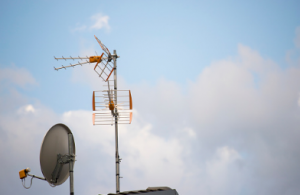Posted on May 12, 2022
Tips For TV Antenna Installation
Before starting the installation process, you should know some basics about tv antennas. This article will cover choosing a good location for the antenna, signal amplifiers, and directional patterns. This article will also help you decide which type of antenna would be best for your location. Then, we’ll discuss some common problems that you may encounter when installing your antenna. After reading the following tips, you’ll be well on your way to installing your antenna.
Choosing a good location for tv antenna installation
 People often place their TV antenna on the same wall as their television. But sometimes, it is better to install the antenna on a higher level in the room to maximise the reception range. You can use a temporary fix like painter’s tape if you don’t have enough space. In addition, make sure that your house is free of any objects or other obstructions that could affect the reception. Check out www.antennainstallations.com.au.
People often place their TV antenna on the same wall as their television. But sometimes, it is better to install the antenna on a higher level in the room to maximise the reception range. You can use a temporary fix like painter’s tape if you don’t have enough space. In addition, make sure that your house is free of any objects or other obstructions that could affect the reception. Check out www.antennainstallations.com.au.
It is important to consider the signal strength when it comes to antenna installation. A TV reception site surveyor will use a directional antenna analyser to measure the signal strength and how many square feet of space the antenna will need to cover. A good location for your antenna will have plenty of free space and a good view of the southern sky. It should also be free from nearby trees and other obstructions that can interfere with the signal.
Choosing a directional pattern
The directional pattern of a TV antenna consists of a series of directors connected to a reflector at the back of the antenna. These elements are gradually smaller, beginning with the largest element connected to the feeder. This element is often a folded dipole. The next element is the driven element, and so on. Generally speaking, this is the most effective pattern. However, depending on the signal you receive, you may want to adjust your antenna’s direction slightly. Check out www.antennainstallations.com.au.
Choosing a signal amplifier
The signal amplifier is an important component of a television antenna installation. It can help enhance picture quality and improve the sound. However, it should be noted that there are certain limitations of TV antenna amplifiers. You should check whether your cable quality is good or not before purchasing one. Some amplifiers can increase signal levels too much. If you have poor cable quality, a better alternative would be a higher gain antenna.
While it may seem like an extra expense, signal amplification improves the quality of your reception and reduces background noise. Without this feature, your signal may not reach your TV screen. Also, you might find your signal too weak due to background noise or coax signal loss. If this is the case, a signal amplifier can help. Here are some tips to consider when choosing a signal amplifier.
Choosing a rotor antenna
The cost of satellite and cable TV is skyrocketing, and a TV antenna rotor may be an affordable and efficient solution. However, if you have a fixed directional antenna, you’ll sacrifice a great deal of reception while also making your home look more dated. On the other hand, a TV antenna rotor has all of the advantages of these systems without the price tag.
A rotor TV antenna is easy to install, and most of them work with a remote control to adjust the direction of your TV signal. However, this type of antenna isn’t the best solution for multiple TVs. A rotor is not suitable for homes with more than one television. If you want to get the signal of your favourite channel in the east, you’ll have to check the direction of the antenna before recording it.
Before installing a rotor, it is important to consider the frequency range. Digital TV signals are broadcast over two frequency bands, VHF and UHF. The former covers channels two to 13 and “high-band” channels 14-51. A UHF antenna receives signals in the higher frequency range and therefore receives more power signals. The best rotor for your installation will depend on the size and orientation of the house and the surrounding structures. Check out www.antennainstallations.com.au.
